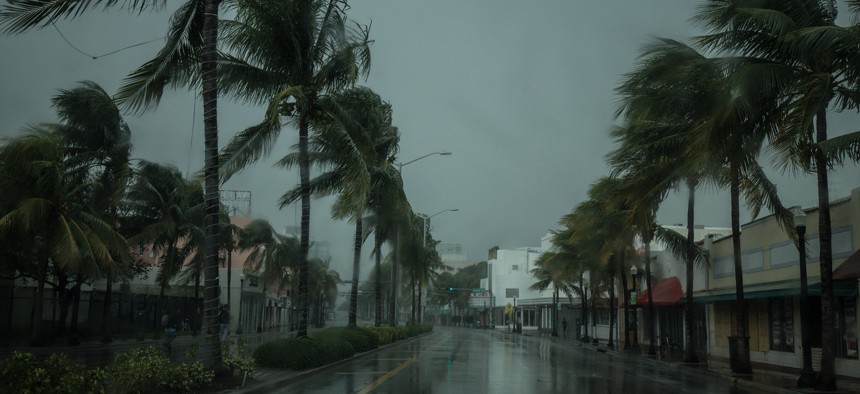The East Coast Cities Most Vulnerable to Hurricanes

A city's history with major storms factors into its vulnerability, per the analysis. Shutterstock
A Weather Channel analysis examined the strength of cities' coastal infrastructure and their susceptibility to storm surge.
Miami, New York City and Charleston, South Carolina are among the most hurricane-vulnerable cities on the East Coast, according to an analysis by meteorologists at the Weather Channel.
The list, published as Hurricane Florence whirls toward the East Coast, determines a city’s chances of sustaining hurricane damage by examining its susceptibility to storm surge, along with the strength of infrastructure near the coastline.
Based on those metrics, along with recent population growth and corresponding coastal development, Miami, New York City, Charleston, Jacksonville, Florida and Virginia’s Chesapeake Bay area are all particularly susceptible to hurricanes, meteorologists concluded.
A city’s history with major hurricanes also plays a part. Miami, for example, regularly contends with the threat of hurricanes, but hasn’t been substantially damaged by a major storm since 1992, when Hurricane Andrew hit the city’s southern suburbs. “In Dade County alone, Andrew killed 15 and left nearly 250,000 people temporarily homeless,” but spared other suburbs, a major port and bustling tourist areas, all of which are more developed now, the analysis says.
In Virginia’s Chesapeake Bay region—which includes the cities of Norfolk and Virginia Beach—sea-level rise is also a major factor. The area is particularly prone to flooding, the list says, “because the land is sinking and the sea is rising at the highest rate on the East Coast.”
The analysis also relies on a May report that estimates the number of coastal properties at risk of damage from storm surge flooding. A total of 6.9 million properties are vulnerable to flooding, the report by analytics firm CoreLogic found, with a potential $1.6 trillion price tag for reconstruction. Large swaths of those properties lie in hurricane-vulnerable cities, including Miami (788,679), New York City (726,048), Charleston (149,900), Jacksonville (171,332) and Virginia Beach (389,938).
As of Monday afternoon, Hurricane Florence—one of three named hurricanes swirling in the Atlantic Ocean—had intensified to a Category 4 storm, with sustained wind speeds of 130 miles per hour, according to an update from the National Hurricane Center. Wind speeds are expected to reach 150 miles per hour by the time the storm makes landfall in the Southeast on Thursday.
Reports indicate that the hurricane could slow or stall out over the mid-Atlantic later in the week, leading to torrential rainfall and flooding even in areas farther inland, including Charlotte, North Carolina and Roanoke, Virginia. But the storm’s exact track remains uncertain.
Kate Elizabeth Queram is a Staff Correspondent for Government Executive’s Route Fifty and is based in Washington, D.C.
NEXT STORY: As Hurricane Florence Takes Aim, N.C. Governor Says ‘Gather Your Supplies Now’





